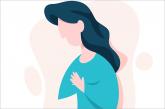Article

Psychiatric and nonpsychiatric indications for mood stabilizers and select antiepileptics
- Author:
- Andrew Karas, PharmD, BCPP
- Lauren Stummer, PharmD, BCPP
- Alexis Freedberg, MD
Mr. B, age 64, is being treated in the psychiatric clinic for generalized anxiety disorder. He also has a history of type 2 diabetes mellitus and...
Article
Nonpsychiatric indications for antidepressants and antipsychotics
- Author:
- Sarah Samel, BA
- Lauren Stummer, PharmD, BCPP
- Andrew Karas, PharmD, BCPP
- Alexis Freedberg, MD
Ms. A, age 45, is hospitalized for abdominal pain. She is noted to have hiccups, the onset of which she reports was >1 month ago and d...
Article

The COPD patient who couldn’t stop worrying
- Author:
- Krista E. Martinez, MD
- David S. Harnett, MD
- Alexis Freedberg, MD
Ms. M, age 76, has MDD, an anxiety disorder, and severe COPD. She experiences persistent rumination and racing thoughts due to refractory...
